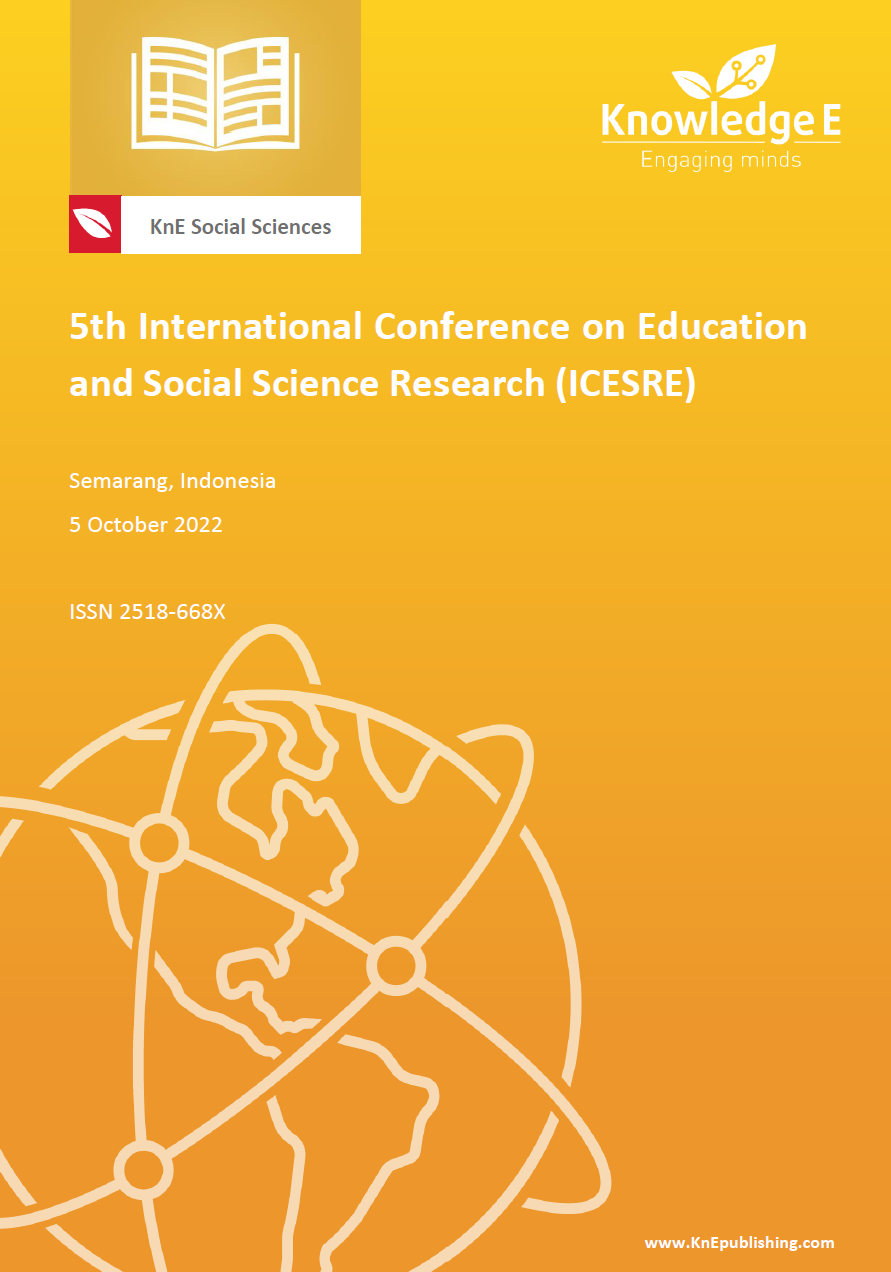Sustainable Practices in Pattern-Making at Local Fashion Institutions: A Qualitative Study
DOI:
https://doi.org/10.18502/kss.v7i19.12490Abstract
Pattern making is one of the most important skill-based courses in fashion education, where students learn clothing construction through drafting, draping, and creating basic patterns for garment productions. Issues in fashion sustainability, such as textile waste and fast fashion, lead to this research. However, practices of sustainable innovation in local higher education institutions are still low compared to other countries. The objective of this research paper is to explore the current sustainable practices in teaching and learning pattern-making skills. A qualitative approach has been adopted to explore the current practices of teaching and learning in some local fashion institutions, and 21 fashion educators participated in semi-structured interview sessions. The results from the thematic analyses show six elements of sustainable innovation which currently being practised: minimization technique, pattern manipulation, upcycling, draping, digital learning, and innovative tools are part of the sustainable innovation practices.
Keywords: Higher Education Research, Education for Sustainable Development, Innovation
References
[2] Hellström T. Dimensions of environmentally sustainable Innovation: The structure of eco-innovation concepts. Sustainable Development. 2007;15:148–159.
[3] Back Y, Parboteeah KP, Nam D. Innovation in emerging markets: The role of management consulting firms. Journal of International Management. 2014;20:390– 405.
[4] Kozlowski A, Searcy C, Bardecki M. The reDesign canvas: Fashion design as a tool for sustainability. Journal of Cleaner Production. 2018;183:194–207.
[5] Fauziah SH, Agamuthu P. Trends in sustainable landfilling in Malaysia, a developing country. Waste Management and Research. 2012;30:656–663.
[6] Saeed MO, Hassan MN, Mujeebu MA. Assessment of municipal solid waste generation and recyclable materials potential in Kuala Lumpur, Malaysia. Waste Management. 2009;29:2209–2213.
[7] Friege H, Germany AD, Hellweg S. From sanitary to sustainable landfilling - Why, how, and when? Environmental Engineering. 2010:1–9.
[8] Wai Yee L, Hasnah Hassan S. Attitude-behaviour gap in sustainable fashion consumption: The role of facilitating conditions. International Journal of Management and Applied Science. 2016;2:978–993.
[9] Kozlowski A, Searcy C, Bardecki M. The reDesign canvas: Fashion design as a tool for sustainability. Journal of Cleaner Production. 2018;183:194–207.
[10] Evans S, Vladimirova D, Holgado M, Van Fossen K, Yang M, Silva EA, et al. Business model innovation for sustainability: Towards a unified perspective for creation of sustainable business models. Business Strategy and the Environment. 2017;26:597– 608.
[11] Turcsányi-Szabó M. Aiming at sustainable innovation in teacher education – From theory to practice. Informatics in Education. 2012;11:115–130.
[12] Zhang BH, Looi CK. Developing a sustainable education innovation for seamless learning. Procedia - Social and Behavioral Sciences. 2011;15:2148–2154.
[13] Pro OUSE. Innovation and education for sustainable development. UNESCO. 2011;3:35.
[14] DeLong M, Alice Casto M, Min S, Goncu-Berk G. Exploring an up-cycling design process for apparel design education. Fashion Practice. 2017;9:48–68.
[15] Dickson A, Adu-Agyem J, Emad Kamil H. Theoretical and conceptual framework: Mandatory ingredients of a quality research. International Journal of Scientific Research. 2018;7:438–441.
[16] Almond K. Zero waste fashion design. Fashion Practice. 2018;10:119–123.
[17] McQuillan H. Hybrid zero waste design practices. Zero waste pattern cutting for composite garment weaving and its implications. The Design Journal. 2019;22:803– 819.
[18] Agarwal V. Sustainable fashion education in changing world scenario. 2018;7:365– 373.
[19] Perry A. 3D-printed apparel and 3D-printer: Exploring advantages, concerns, and purchases. International Journal of Fashion Design, Technology and Education. 2018;11:95–103.
[20] Echeverria CA, Handoko W, Pahlevani F, Sahajwalla V. Cascading use of textile waste for the advancement of fibre reinforced composites for building applications. Journal of Cleaner Production. 2019;208:1524–1536.
[21] Kituyi M. Beyond Uncertainty Annual Report 2019 Highlights. Geneva, Switzerland: UNCTAD; 2019.
[22] McQuillan H, Rissanen T, Roberts J. The cutting circle: How making challenges design. Research Journal of Textile and Apparel. 2013;17:39–49.
[23] Power EJ. Sustainable developments in knitting. Manchester, UK: Manchester Metropolitan University; 2009.
[24] Carrico M, Kim V. Expanding zero-waste design practices: A discussion paper. International Journal of Fashion Design, Technology and Education. 2014;7:58–64.
[25] Niinimäki K. From disposable to sustainable: The complex interplay between design and consumption of textiles and clothing. 2011.
[26] Townsend K, Mills F. Mastering zero: How the pursuit of less waste leads to more creative pattern cutting. International Journal of Fashion Design, Technology and Education. 2013;6:104–111.
[27] Roberts J. Free cutting. 2013.
[28] Shawki O, Mansour M. Integrating the concept of modular design and dart manipulation technique. International Design Journal. 2009;7:87–97.
[29] Rathinamoorthy R. Circular economy in textiles and apparel.Woodhead Publishing. 2019. Muthu SS, editor. 2 - Circular fashion. p. 13–48.

